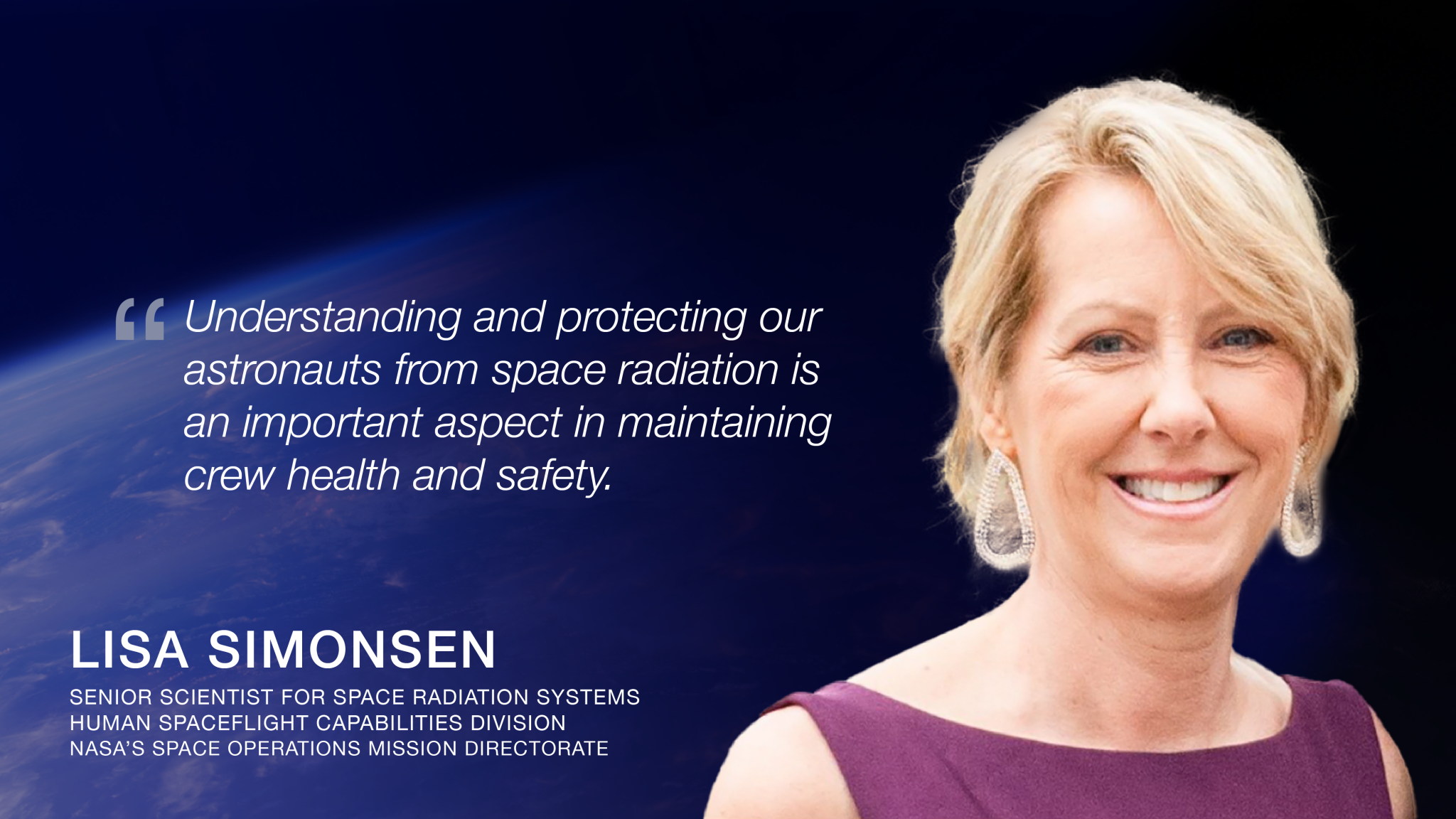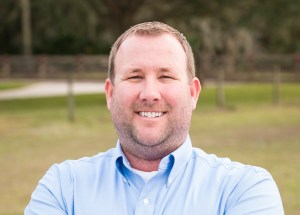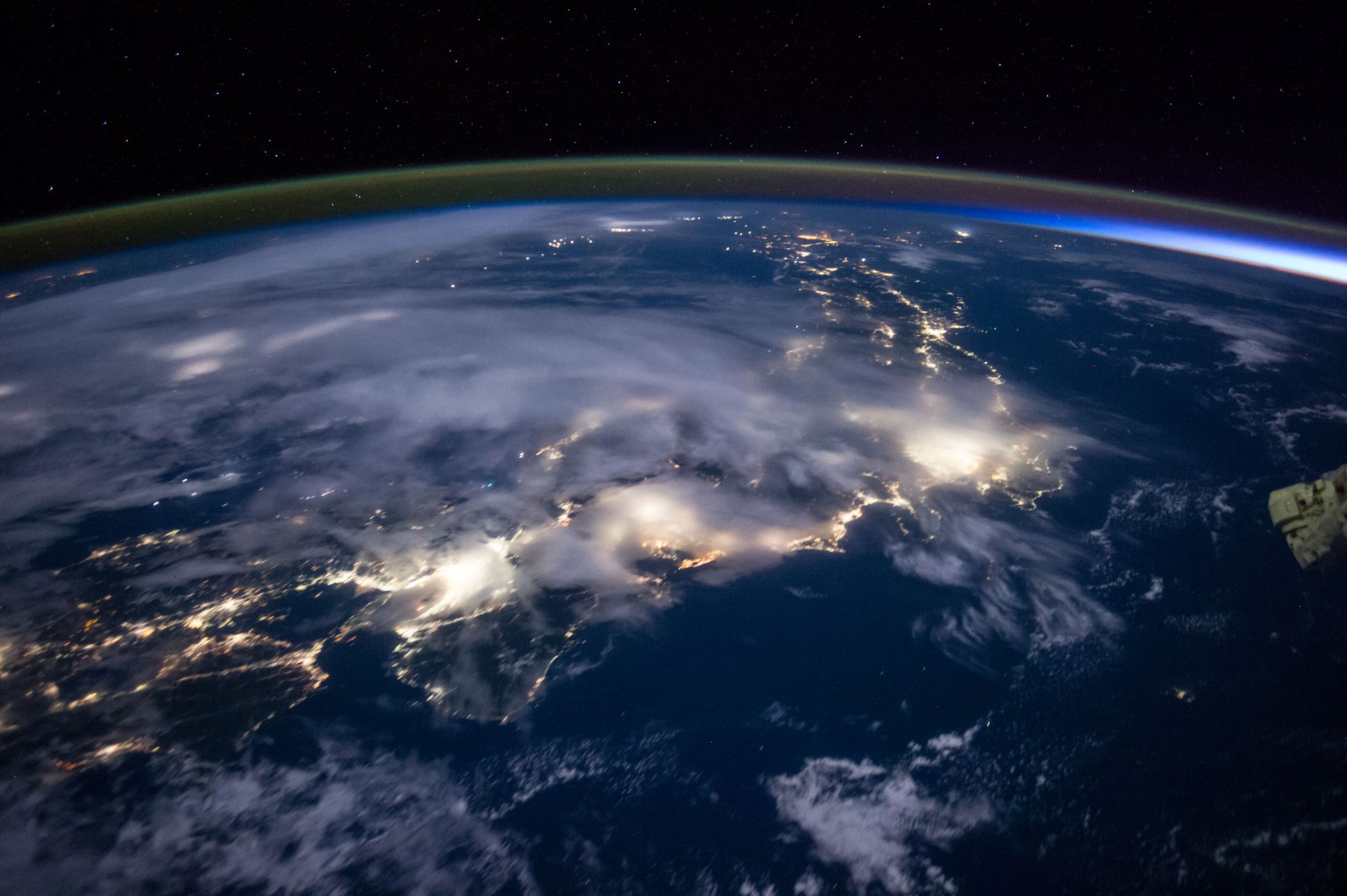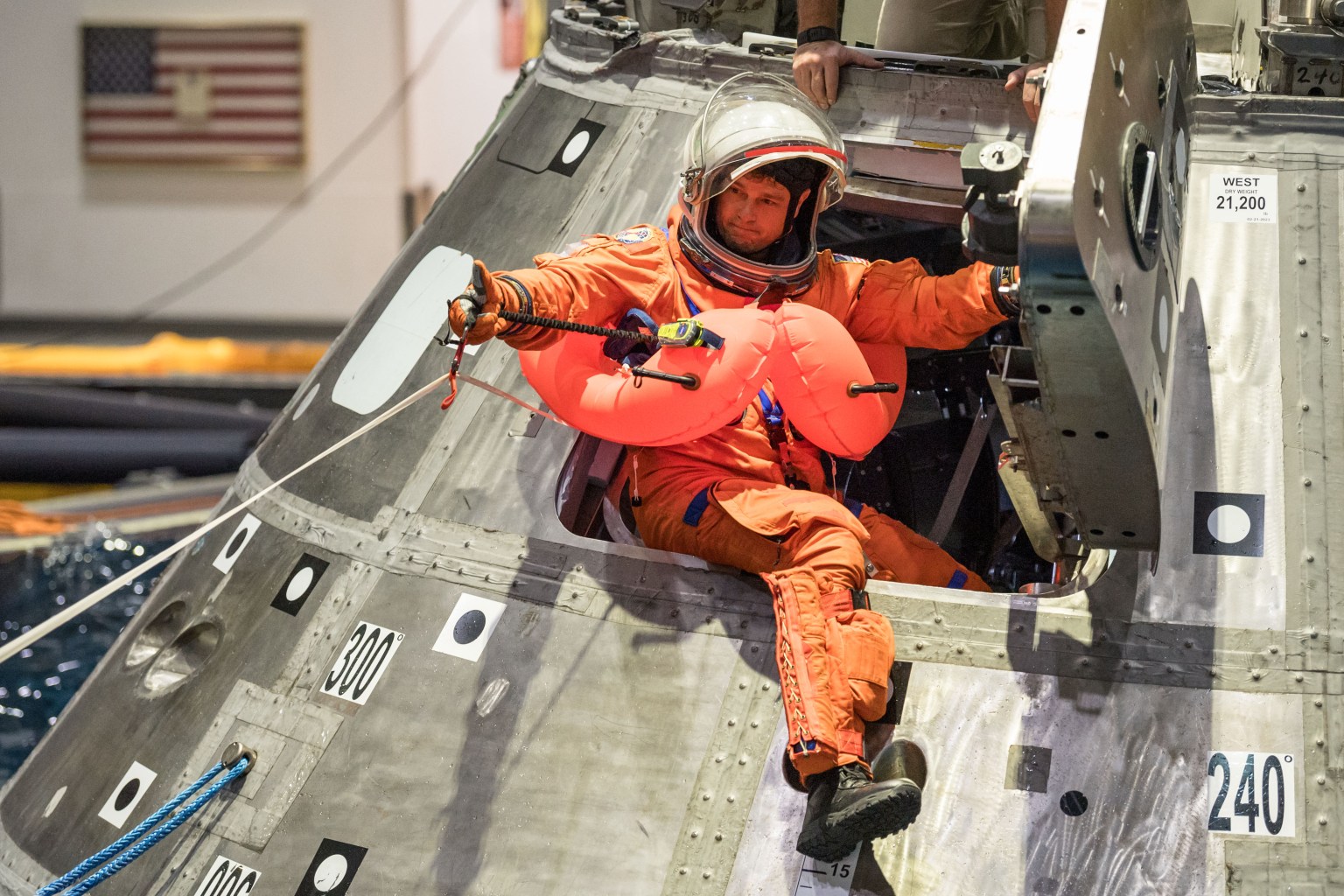Lisa Simonsen’s passion for space exploration traces back to her childhood, specifically July 1969, when NASA astronauts first landed on the Moon as part of the Apollo program.
“I was sitting on my sleeping bag, glued to the TV, watching the first lunar landing with my family,” said Simonsen. “I am thrilled that a new generation will share in the excitement of Artemis and human lunar return.”
For more than 35 years, Simonsen has dedicated her career to advancing human spaceflight. In her role as space radiation systems senior scientist in the Human Spaceflight Capabilities Division within NASA’s Space Operations Mission Directorate, Simonsen works to identify research and technology development efforts needed to reduce crew exposures and minimize health risks while advancing NASA mission objectives.
“Understanding and protecting our astronauts from space radiation is an important aspect in maintaining crew health and safety,” said Simonsen.
Simonsen also provides technical leadership within NASA’s Space Radiation Research Laboratory in Upton, New York. Work performed at the laboratory includes replicating the high-energy particle environment of space by conducting biological research to understand radiogenic health risks and developing protective countermeasures for astronauts.
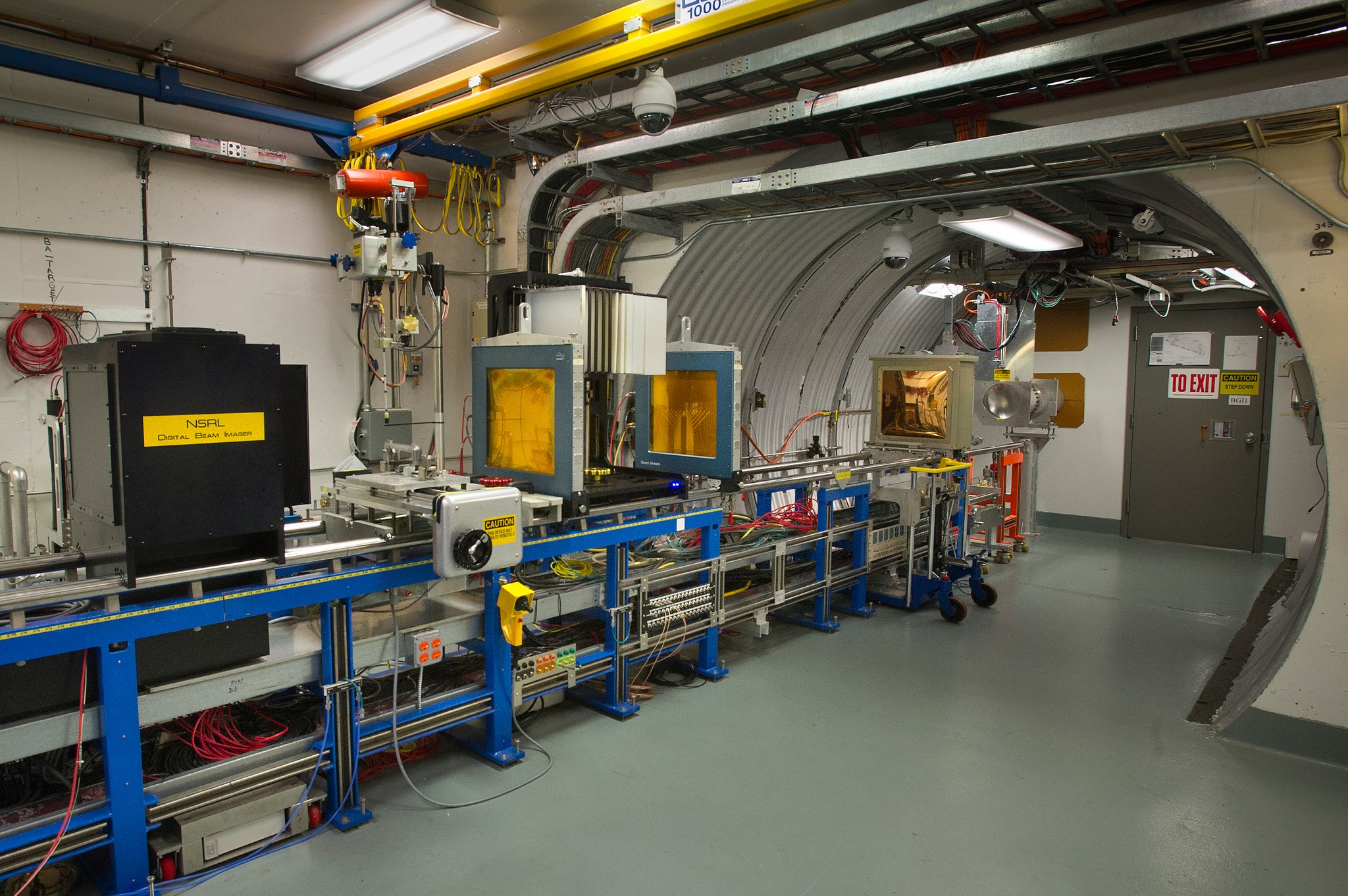
As Simonsen reflects on her career, she attributes her contributions to the development of the world’s first ground-based Galactic Cosmic Ray Simulator as a major highlight. A culmination of years of work enabled by a team of space and accelerator physicists, software control engineers, and biologists from NASA and the Department of Energy, the simulator technology delivers a highly mixed field of particles found in space for biological research and testing.
Hailing from Williamsburg, Virginia, Simonsen received a bachelor’s of science in Chemical Engineering from Clarkson University in New York, as well as two degrees from the University of Virginia: a master’s of science in Chemical Engineering and a doctorate in Nuclear Engineering and Health Physics.
Beyond her professional achievements, Simonsen enjoys spending time outdoors with her family, including running with her dog, boating, and skiing. Simonsen’s commitment to advancing space radiation research embodies NASA’s mission of exploration and innovation, paving the way for humanity’s continued journey into the cosmos.
NASA’s Space Operations Mission Directorate maintains a continuous human presence in space for the benefit of people on Earth. The programs within the directorate are the hub of NASA’s space exploration efforts, enabling Artemis, commercial space, science, and other agency missions through communication, launch services, research capabilities, and crew support.
To learn more about NASA’s Space Operation Mission Directorate, visit:
























